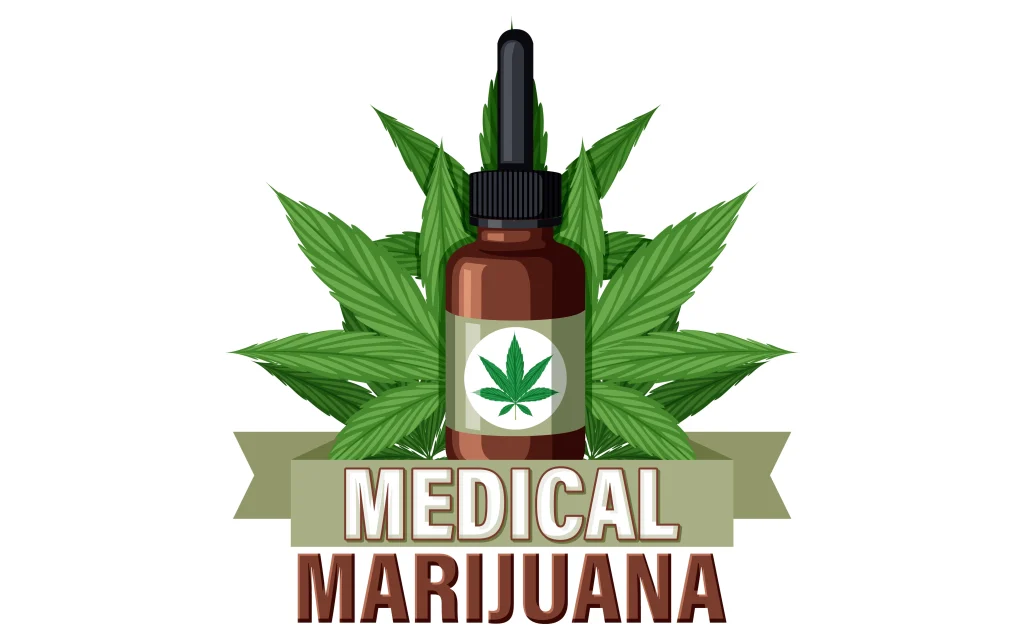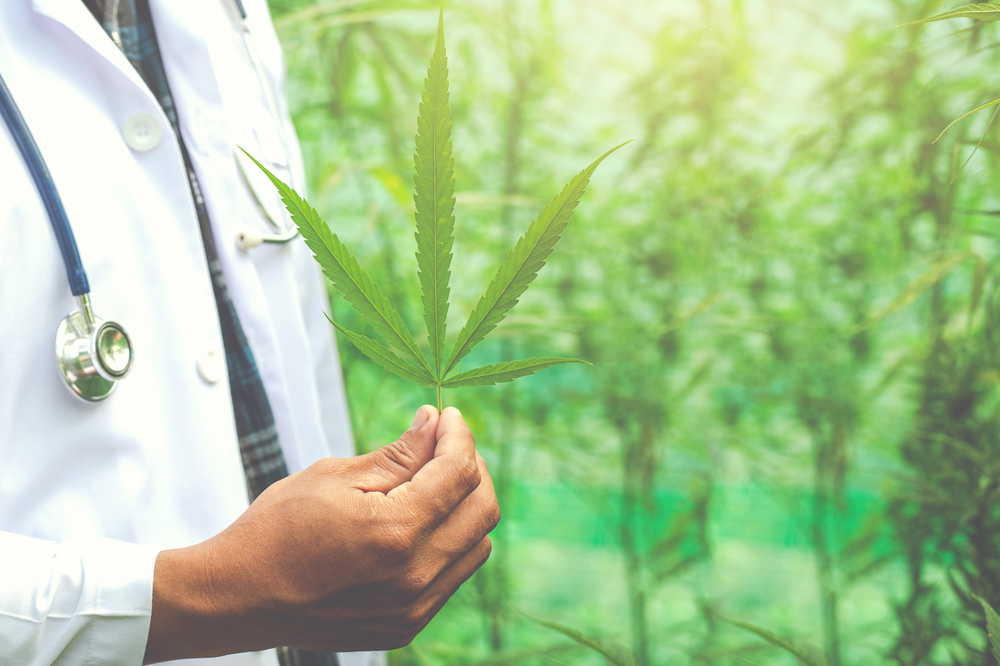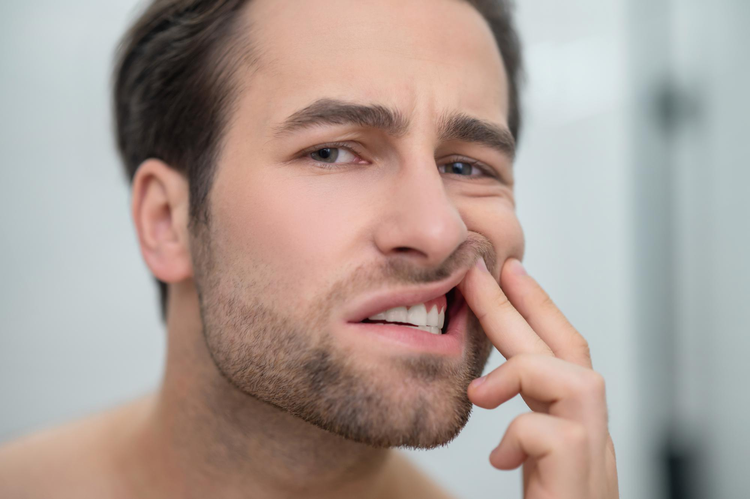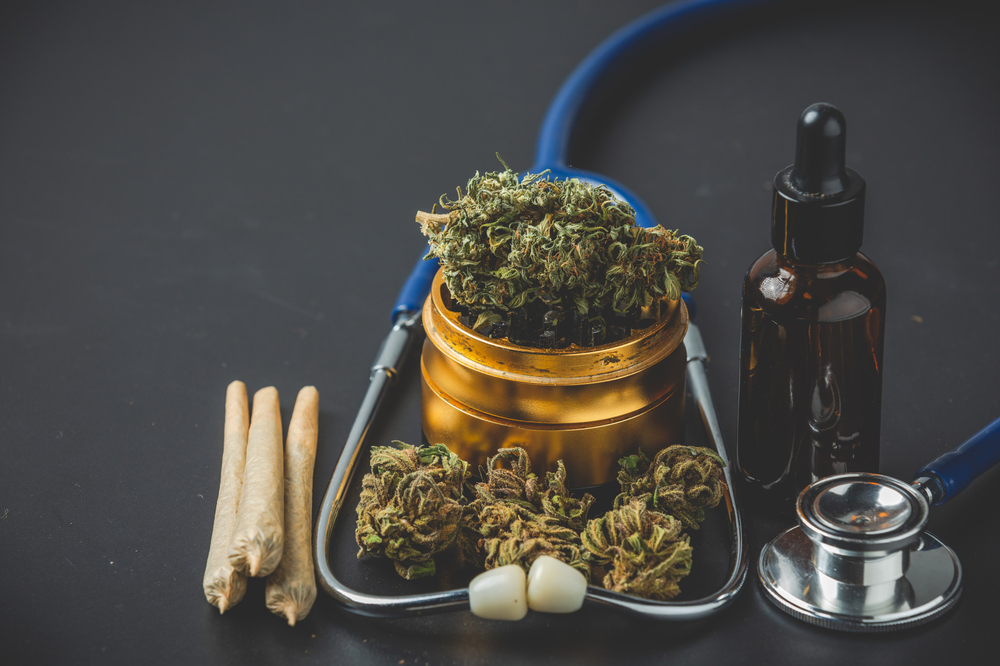


This guide to medical marijuana will give you useful information about this growing form of medicine. It is here to help both new and current cannabis users embark on their medical marijuana journeys safely and responsibly. We will look at the possible benefits and talk about common issues, like cotton mouth. We will also discuss how to manage this side effect.

Medical marijuana is getting a lot of attention for its possible health benefits. Many people use it to help with different health issues like long-lasting pain and mental health problems. It may also help with the side effects of other treatments. Still, medical marijuana can cause side effects too, and cotton mouth is one of the most common.
Cotton mouth, or dry mouth (medically known as xerostomia), makes your mouth feel very dry. This happens because your body produces less saliva. This guide will explain medical marijuana better. It will also go into what causes cotton mouth, how it feels, and how to manage it effectively.
Medical marijuana means using the cannabis plant or its extracts for health reasons. People can use it to help with long-term illnesses or to reduce side effects from some treatments. The cannabis plant has many active compounds. THC and CBD are the most well-known.
THC is known for its ability to make you feel high. On the other hand, CBD is known for its benefits without causing a high. These compounds work together with the human body’s endocannabinoid system (ECS). This system has a network of receptors, called cannabinoid receptors. They help control many body functions, like mood, sleep, appetite, and how we feel pain.
When cannabis interacts with the ECS, it can produce helpful effects. The different amounts of THC and CBD can change how it works. This is why it’s important to find the right type of medical marijuana for your needs, and to do so with help from a healthcare professional.

The most common side effect of cannabis is cotton mouth, also called xerostomia. Cotton mouth happens mainly because of how cannabis, especially THC, interacts with the body’s endocannabinoid system. This interaction affects the saliva glands, particularly the submandibular glands, which make most of our saliva.
When THC attaches to cannabinoid receptors in the salivary glands, it messes up signaling pathways. This leads to less saliva being produced. Saliva is important for our oral health. It helps keep the mouth wet, aids in digestion, protects our teeth from decay, and controls bacteria levels.
When saliva secretion goes down, the symptoms of dry mouth make you feel dry, sticky, or like you have a whole bunch of sand in your mouth soaking up all the moisture. Other signs can include a sore throat, trouble swallowing, a hoarse voice, a burning feeling in the mouth, and cracked lips.
In summary, the phenomenon of dry mouth is primarily due to the cannabinoids affecting the salivary glands, and this can happen whether you consume cannabis through smoking or edibles.

Starting a journey with medical marijuana takes thought and planning. It is important to talk to a qualified doctor. They can help you see if medical marijuana is the right choice for your health condition. You should also know the laws about medical marijuana in your state. Getting the right tools for safe use is key, as is learning about the different strains available.
By being proactive and well-informed, you can have a safe and positive cannabis experience.
Before starting your medical marijuana treatment, it is important to know the laws. You should also gather the right tools to use cannabis safely and effectively. Check your state’s specific laws about medical marijuana, such as limits on possession and conditions that qualify for use.
Once you understand the legal requirements, you can begin to get the tools you need. These tools might include: a grinder for preparing dry herb, a vaporizer for inhaling cannabis, rolling papers for smoking, or special pipes or bongs. If you want to try edibles or tinctures, make sure you have measuring tools to control how much you take.
Choosing the right tools is based on how you prefer to consume cannabis and your personal preferences. For advice tailored to your needs, talk to a knowledgeable professional at a licensed dispensary.
Navigating the laws about cannabis use in the United States can be tricky. The rules change a lot from state to state. Medical marijuana is legal in many places, but recreational use is not allowed everywhere. It is important to know the specific laws about using, possessing, and growing cannabis where you live and where you are traveling to.
To access and use medical cannabis legally, you usually need a medical marijuana card. The rules for getting this card differ for each state. Often, you need to have a qualifying medical condition, get a recommendation from a physician, and complete a registration with the state health department.
Keep in mind that federal law still lists cannabis as a Schedule I drug, even though it is allowed in some states. However, the law is under review at this time, proposing to reclassify marijuana from Schedule I to Schedule III, acknowledging its medical benefits. So, it is very important to follow both state and federal laws on the use of cannabis to avoid getting into legal trouble.

Using medical marijuana safely means following a clear plan. Start with a visit to a healthcare professional for guidance. Then, pay attention to how it affects you. This way, you can get the most benefit while lessening any risks. Taking this careful route helps people handle their conditions better. It also lowers the chance of side effects and helps improve general health.
Before you add medical marijuana to your treatment plan, it is essential to talk to a qualified healthcare provider. They can look at your medical history, current health issues, and possible drug interactions to see if medical marijuana is right for you. It is important to have an open and honest talk with your healthcare provider about why you want to use medical marijuana.
During your visit, be ready to share detailed information about your symptoms, previous treatments, allergies, and any other medications or supplements you take. This will help your healthcare provider give you the right advice on dosage, how to use it, and which strains are best for your needs and lifestyle.
Always remember that safe use of medical marijuana begins with professional guidance. Remember not everyone knows your personal history. This ensures that you stay safe while enjoying its benefits and helps reduce any risks or side effects.
Choosing the right strain and product is very important for your medical marijuana experience, as different levels of cannabinoids may have different effects on you. THC can make you feel high, while CBD is more for healing without that “high” feeling. Talking to an expert at a licensed dispensary will help you find the best strain for your needs. They can help you understand the various products like flowers, edibles, tinctures, topicals, and concentrates.
Think about your own tolerance, the effect you want, and when you plan to use marijuana. For example, Indica strains are usually for relaxation and pain relief, which makes them good for nighttime. Sativa strains tend to lift your mood and give you energy, making them better for use during the day.

Medical marijuana can have many health benefits. However, it is important to manage its side effects, especially cotton mouth. This condition can make your mouth feel very dry. Luckily, there are different ways to ease the discomfort from a dry mouth.
By choosing a saliva substitute, drinking plenty of fluids, changing your diet, and trying other remedies, you can manage this common side effect. This way, you can enjoy the benefits of medical marijuana without too much trouble.
Maintaining proper hydration is very important for handling cotton mouth. When you are dehydrated, dry mouth symptoms can get worse. By drinking water regularly during the day, especially before, during, and after cannabis use, you can keep your mouth moist. This will help reduce severe dryness.
Having a reusable water bottle can remind you to stay hydrated. You might like adding a slice of lemon, cucumber, or mint for a fresh flavor. Try to avoid sugary drinks because they can make dry mouth worse.
In addition to water, you can also drink herbal teas, sugar-free electrolyte drinks, and eat fruits and veggies with lots of water in them, like watermelon, cucumber, and celery. These options can help boost saliva production and give you needed hydration for a more comfortable time.
To manage cotton mouth, it is important to stay hydrated. Some changes in what you eat, and proper oral care can really help with a dry mouth. Eating foods that help make saliva can provide comfort from dryness.
Here are some tips for your diet and oral care:

For people who have a dry mouth that doesn’t get better with drinking fluids or changing their diet, saliva substitutes can help. These products act like natural saliva. They add moisture, help with lubrication, and keep the mouth healthy.
You can find saliva substitutes in different forms. However, I highly suggest Lubricity Xtra for a couple of reasons;
1) Hyaluronic Acid: An ingredient that is naturally in your body that can hold up 1,000 times its weight in moisture, helping to keep your mouth moist.
2) Xylitol: A natural sugar found in plants, known for promoting good oral health and does not cause tooth decay.
3) Only 6 All-Natural Ingredients: With no parabens or sulfates.
4) 2 Great Flavors: Strawberry and Mint to alleviate bad breath.
4) No Alcohol, Sugar or Gluten: Creating a product that does exactly what it should do, moisten the mouth, help increase saliva flow, and reduce acids that can cause tooth decay.
Don’t pick just any saliva substitute, think about the quality of what you are putting in your mouth. Using a dentist recommended product, like Lubricity Xtra can help relieve your cotton mouth symptoms and keep your oral care on track.
It is important to manage cotton mouth. But we should also talk about the possible helpful effects of medical marijuana for different health issues. This includes things like managing chronic pain and supporting mental health. Researchers are always exploring how this alternative medicine can be beneficial.

One of the best-known benefits of medical marijuana is its ability to help with pain. This is mainly due to how cannabis works with the body’s endocannabinoid system (ECS). The ECS is important for controlling pain, inflammation, and immune responses.
Cannabis has compounds like THC and CBD that connect with cannabinoid receptors in the ECS. THC, for example, activates CB1 receptors found in the brain and spinal cord. This can help lower pain signals and create a feeling of relaxation.
CBD works differently. It interacts with both CB1 and CB2 receptors. This can potentially ease inflammation and help reduce pain. Clinical studies have shown good results for using medical marijuana to manage chronic pain issues, like neuropathy, arthritis, and multiple sclerosis.
Beyond how it affects the body, medical marijuana might also help mental health. Research shows that cannabis can interact with the endocannabinoid system (ECS). This interaction may be helpful for people with worries, sadness, or flashbacks from past trauma, like anxiety, depression, and PTSD. Studies have shown that Medical marijuana can control
While we need more research to see the long-term results, some cannabinoids, like CBD, may help reduce anxiety and create a feeling of calm. In some cases, THC in safe amounts might help some people feel less depressed. Still, it’s important to know that cannabis use can change from person to person. It is very important to talk to a mental health expert to find out if medical marijuana could work for you.

While medical marijuana can help with many health issues, it is important to know about possible side effects. Cotton mouth is a common side effect, but you can manage it by staying hydrated and making some changes to your diet. Other side effects, like dizziness, dry eyes, or increased heart rate, should be shared with your healthcare provider.
Knowing the different possible side effects and managing them can make your experience with medical marijuana safer and better. It is essential to have open talks with your healthcare provider during your medical marijuana journey. This way, you can discuss any worries you have and adjust your treatment plan if needed.
Just like any medicine, using cannabis can cause some side effects. However, not everyone will feel them. Knowing about these side effects is important for making good choices. Some common side effects of cannabis use are:
These side effects are usually mild and go away quickly, however, you should never drive during or after you have tried marijuana. It’s good to be aware of the side effects, especially if you are trying cannabis for the first time or using a new strain or product. If you feel any bad reactions, stop using cannabis and talk to your doctor to get help.

While it may be hard to get rid of all side effects, there are ways to lessen the unwanted effects of cannabis use. This can help make your experience better.
Here are some helpful tips:
By following these tips and being careful with cannabis use, you can lower the chances of having unwanted side effects.
Medical marijuana has many benefits. However, one common side effect is cotton mouth. To manage this discomfort, it’s important to know what causes it and its symptoms. You can also use hydration strategies and oral care tips. Always talk to a healthcare provider before use. It is also helpful to pick the right strain and stay hydrated. There are more benefits of medical marijuana beyond dealing with cotton mouth. These include pain relief and support for mental health. If you use it responsibly and have the right knowledge, you can enjoy the benefits of medical marijuana safely.
To fully stop cotton mouth can be hard, but you can reduce how bad it is. Drink plenty of water, chew sugar-free gum, and use a good saliva substitute. These things can help fix the lower saliva production caused by cannabis use. This way, your dry mouth can be less bothersome.
Research shows that some strains with more CBD and less THC may cause fewer oral dryness symptoms. However, everyone can react differently. It is important to stay hydrated no matter which strain you use.
The main difference is in the purpose and laws around use. Medical marijuana helps relieve symptoms of certain health issues, and people can use it if they have legal permission and a doctor’s advice. On the other hand, recreational use is about the enjoyable effects of the plant. This type of use is controlled by specific laws.
Legal rules for getting medical marijuana are very different in each state. Usually, you need to:
Yes, there are many other remedies for managing pain that usually don’t cause cotton mouth. Some options are:
Talk to your healthcare provider to find the best approach for your needs and likes.